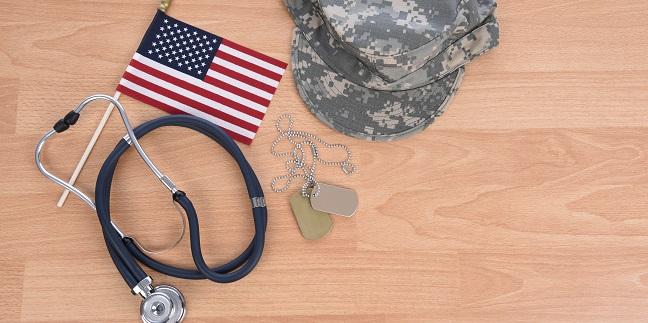Elective PCI Done Outside the VA System Riskier for US Veterans
Outside the VA’s oversight, PCI in community hospitals carries higher mortality, especially within the first month.

More than half of US veterans undergoing elective PCI now choose to do so at a community hospital rather than through the healthcare system of the Department of Veterans Affairs (VA), researchers have found. But these patients are at higher risk of dying—especially within the first month—than those treated at a VA medical center.
Policy changes have driven the shift toward community care, lead author Stephen W. Waldo, MD, Aurora, CO), explained to TCTMD.
First, the Veterans Choice Act of 2014 “enabled veterans to seek care outside of the VA if they were unable to get care within the VA in a reasonable period of time or they lived a significant distance away from a tertiary care facility that could provide those sources,” he said. With the 2018 MISSION Act, which aims to further streamline access, “they now have the opportunity to seek access to care much closer to their homes.”
Morton Kern, MD (University of California, Irvine, and VA Long Beach Healthcare System), said that for those working in the VA it’s “kind of common knowledge that you don’t know what you get when you send somebody to the community—we don’t have any control over it, we don’t have any tracking of it, they don’t have any responsibility for the quality of care they perform, and we don’t know what it costs. . . . We may or may not even get the records back.”
Thus, it’s no surprise that the level of care might be quite variable, with some hospitals performing better than others, he told TCTMD. This phenomenon, though, “has not been well looked at and this is a study that says, yes, that’s true.” It’s a warning, Kern said, that something needs to happen in order to change course—outcomes aren’t being tracked and there are no penalties for poor performance.
You don’t know what you get when you send somebody to the community. Morton Kern
Waldo et al looked at 8,913 patients who were actively enrolled in the VA healthcare system and underwent elective PCI for stable angina between October 2015 and December 2018. Two-thirds had their procedures done within the VA and one-third in community facilities—over the course of the study, the proportion done at non-VA hospitals rose from 38.9% to 51.8%.
Using a Cox proportional hazards model, there was a 33% increase in death risk for elective PCI patients treated at community hospitals versus within the VA (HR 1.33; 95% CI 1.09-1.62), with an absolute risk difference of 1.4%. Restricting the analysis to just the first month showed an even sharper increase in relative risk—143%, with an absolute difference of 0.7%—for the community-hospital setting (HR 2.43; 95% CI 1.50-3.94).
Administrative billing data were used to determine outcomes in the community, Waldo pointed out. There were no details captured for procedural complexity or complications.
“We don’t have access to the same level of quality information for patients that are treated outside the VA as we do within the VA,” he said. “And that’s something, I think, going forward that can be taken away from this: an opportunity to improve, to ensure that patients treated outside the VA have the same level of quality assessment and quality assurance that those treated within the VA have.”
Perhaps it would make sense, he suggested, to partner with existing programs, such as the National Cardiovascular Data Registry, or to use the resources of the MISSION Act to obtain the same information on veterans regardless of whether they are treated at a VA facility or elsewhere.
[There’s] an opportunity to improve, to ensure that patients treated outside the VA have the same level of quality assessment and quality assurance that those treated within the VA have. Stephen W. Waldo
Kern, too, called for broader quality initiatives and for clinicians to strive for high standards. Payment structures might be able to encourage better performance, if the VA mandated that referral centers meet certain criteria.
As for what individual physicians can do, Waldo said they should follow best practices for PCI, using radial access and intravascular imaging as much as possible, and also make sure that patients are discharged on guideline-directed medical therapy. “Those are the foundational blocks for improved interventional care, within the VA and outside the VA,” he observed.
Caitlin E. Cox is News Editor of TCTMD and Associate Director, Editorial Content at the Cardiovascular Research Foundation. She produces the…
Read Full BioSources
Waldo SW, Glorioso TJ, Barón AE, et al. Outcomes among patients undergoing elective percutaneous coronary intervention at Veterans Affairs and community care hospitals. J Am Coll Cardiol. 2020;76:1112-1116.
Disclosures
- Waldo and Kern report no relevant conflicts of interest.


Comments